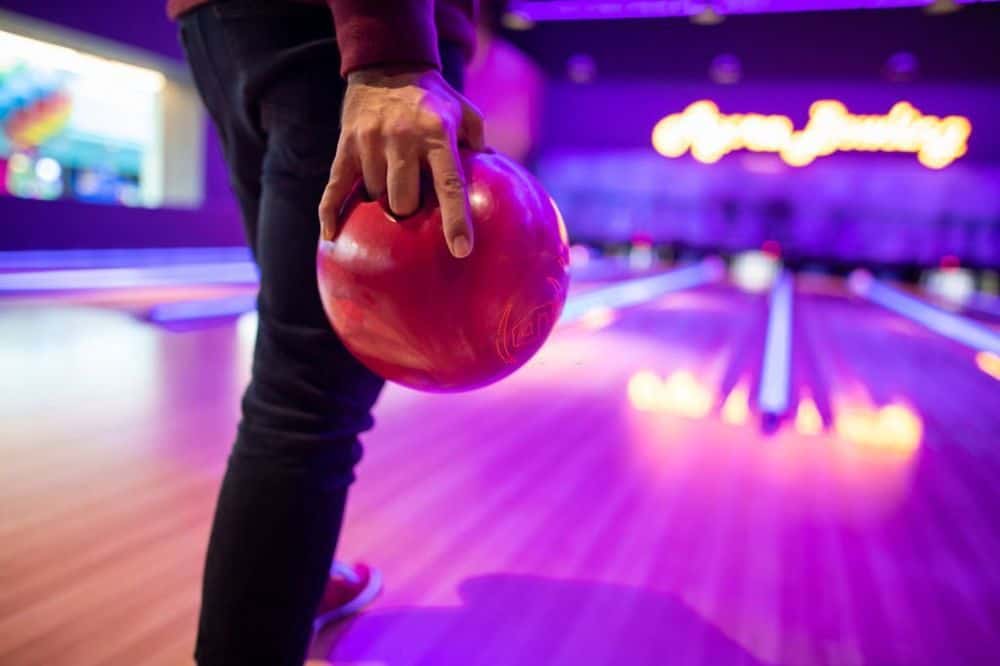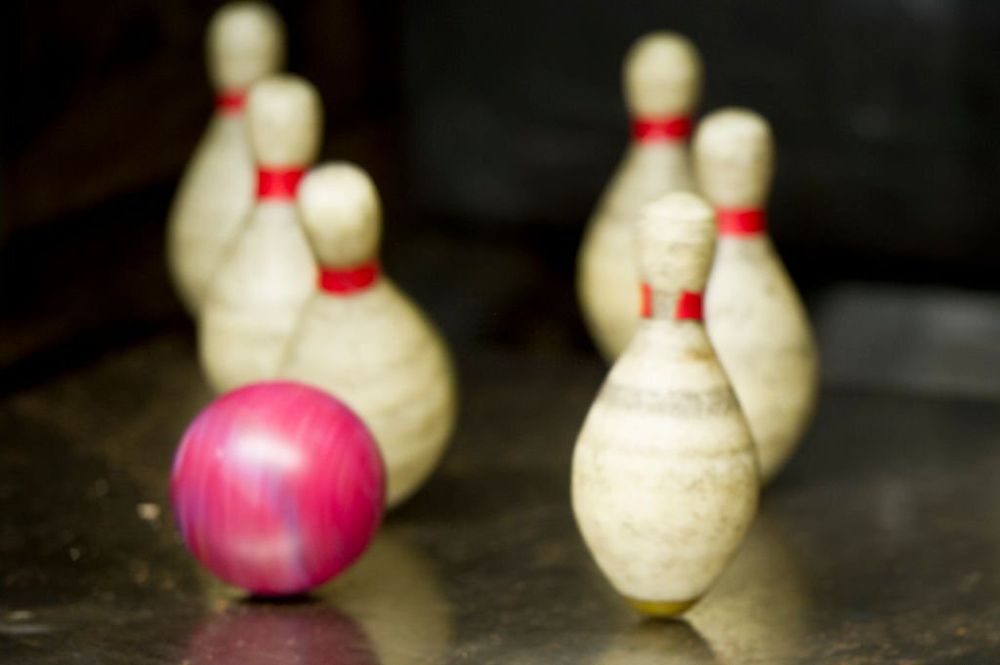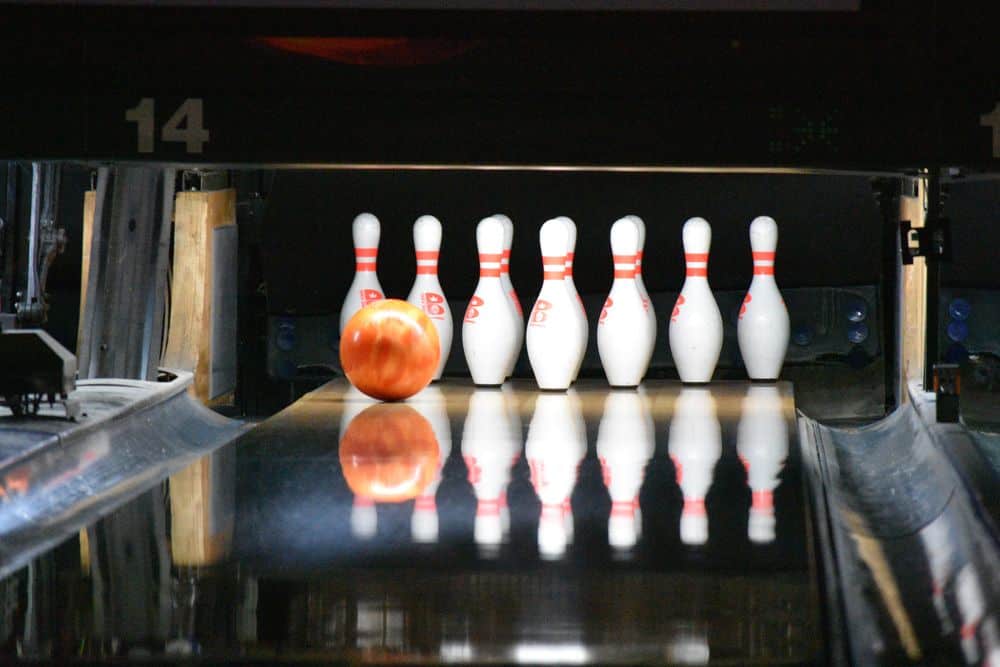Do you enjoy bowling and are curious about trying out the two-handed technique? Before you do, it’s important to understand the rules and regulations surrounding this style of bowling.
While two-handed bowling has become increasingly popular in recent years, some bowlers and officials have debated its legality. The United States Bowling Congress (USBC) sets the standard for rules and regulations regarding bowling in the United States.
While there are no explicit rules against using a two-handed approach, certain restrictions do apply. It’s essential to know these guidelines before attempting to use this technique during a sanctioned game or competition.
In this article, we’ll explore the ins and outs of two-handed bowling, from how it works to whether it’s legal in different parts of the world.
The Technique of Two-Handed Bowling
Learning the technique of two-handed bowling can greatly improve your game and give you an edge over other players. When using this technique, you use both hands to grip the ball and swing it back before releasing it down the lane.
This style is becoming increasingly popular among bowlers because it offers scoring advantages over traditional one-handed bowling. One reason for this is that two-handed bowling allows for increased speed and revolutions on the ball. The extra force generated from both arms creates more power behind the throw, resulting in a stronger hook or curve.
Additionally, the release point can be closer to the foul line, giving bowlers more control over their aim. However, it’s important to note that two-handed bowling may put added strain on your body if not executed properly. Injury prevention should be a top priority when learning this technique.
Bowlers should focus on maintaining proper form while minimizing unnecessary movement to avoid potential shoulder or wrist injuries. With practice and proper technique, two-handed bowling can provide significant benefits to improve your game and overall scoring performance without compromising your physical health.
Rules and Regulations of the United States Bowling Congress
You’ll be pleased to know that the Rules and Regulations of the United States Bowling Congress have clear guidelines on the proper technique for delivering a ball.
According to their rules, a bowler must release the ball with one hand while remaining behind the foul line until the ball has left their hand. This means that two-handed bowling is legal as long as only one hand is used to release the ball.
Handicap adjustments are also made based on this rule. Bowlers who use both hands to deliver the ball are not penalized or given any advantage over those who use only one hand.
The USBC recognizes that two-handed bowlers may have an advantage due to their unique style, but this is offset by handicap adjustments which take into account factors such as skill level and average score.
While some implementation challenges exist, such as determining whether a bowler is using both hands during delivery or if they’re using it solely for balance, USBC officials are trained to identify these nuances and ensure fair play.
Overall, it’s good news for two-handed bowlers who can continue using their preferred technique without fear of breaking any rules or regulations in sanctioned competitions.
Restrictions on the Use of Two-Handed Bowling
If you’re looking to add a unique spin to your game, beware of the limitations on using your non-dominant hand in bowling competitions – it’s like trying to write with your off-hand, something that may seem impossible at first but with practice can become a valuable skill.
When it comes to two-handed bowling, there are certain restrictions that must be adhered to according to the United States Bowling Congress (USBC) rules and regulations. One of these restrictions is equipment requirements. The USBC specifies that bowlers who use two hands must only use one ball during their shot. This means that they cannot switch between two different balls during their turn or throw multiple balls simultaneously.
Additionally, bowlers who use both hands cannot attach any devices or aids to their wrist or fingers for support since this would be considered an unfair advantage. While some may argue that two-handed bowling offers physical benefits such as increased speed and power, these advantages come at a cost.
The USBC recognizes the potential for injury from using unnatural movements and therefore closely monitors bowlers who employ this technique. Bowlers who use both hands must ensure they do not violate any of the established rules and regulations set by the governing body in order to avoid disqualification or other penalties during competition.
Legality of Two-Handed Bowling in Different Countries
Have you ever wondered if two-handed bowling is legal in different countries? Well, the good news is that this technique is generally accepted worldwide. However, there may be slight variations in the rules depending on the country and league.
Here are some examples of how two-handed bowling is treated in different parts of the world:
-
In the United States, two-handed bowling has become increasingly popular among both amateur and professional bowlers. The Professional Bowlers Association (PBA) allows its use in all tournaments.
-
In Japan, where two-handed bowlers have been successful at international competitions, this technique is widely accepted. In fact, some local leagues have even modified their rules to accommodate it.
-
In Australia, two-handed bowling has been a topic of debate among traditionalists who believe it goes against the spirit of the game. Nevertheless, most leagues allow it as long as certain conditions are met.
While there might be minor differences in how each country or league regulates this technique, it’s safe to say that two-handed bowling is considered a legal way to bowl around the world.
So whether you’re an aspiring bowler looking to improve your game or just curious about what other countries are doing, take comfort in knowing that this innovative approach isn’t going anywhere anytime soon.
Debates and Controversies Surrounding Two-Handed Bowling
There’s much debate and controversy surrounding the use of two-handed bowling. Some traditionalists argue that it goes against the spirit of the game. They claim that using both hands allows bowlers to generate more power, making it easier for them to knock down pins. This gives players who use this technique an unfair advantage over those who stick to the traditional one-handed method.
However, proponents of two-handed bowling argue that there are also disadvantages to using this technique. For example, it can be more difficult for bowlers to control their ball’s spin and direction since they’re using both hands at once. Additionally, players who use the two-handed approach often have a harder time picking up spares than those who bowl with one hand.
Despite these debates, two-handed bowling has had a significant impact on professional bowling scene in recent years. Many young players have adopted this technique as they find it easier to learn and execute than traditional one-handed bowling. As a result, we’ve seen several new champions emerge from countries like Australia and Korea where two-handed bowling is already popular.
Conclusion
So, is two-handed bowling legal? Yes, but with restrictions and regulations.
While the technique has been adopted by many professional bowlers and has gained popularity among amateurs as well, it remains a topic of debate and controversy.
On one hand, some argue that two-handed bowling gives an unfair advantage to those who use it. Others believe that it simply adds variety to the sport and should be accepted as a legitimate technique.
Regardless of where you stand on this issue, it’s important to understand the rules and regulations set forth by organizations such as the United States Bowling Congress in order to ensure fair play and avoid any penalties or disqualifications.
Whether you are for or against two-handed bowling, there’s no denying that it has made its mark on the sport. As with any technique or skill in any sport, there will always be differing opinions and perspectives.
Ultimately, what matters most is that all players follow the established rules and regulations in order to maintain fairness and sportsmanship on the lanes.









